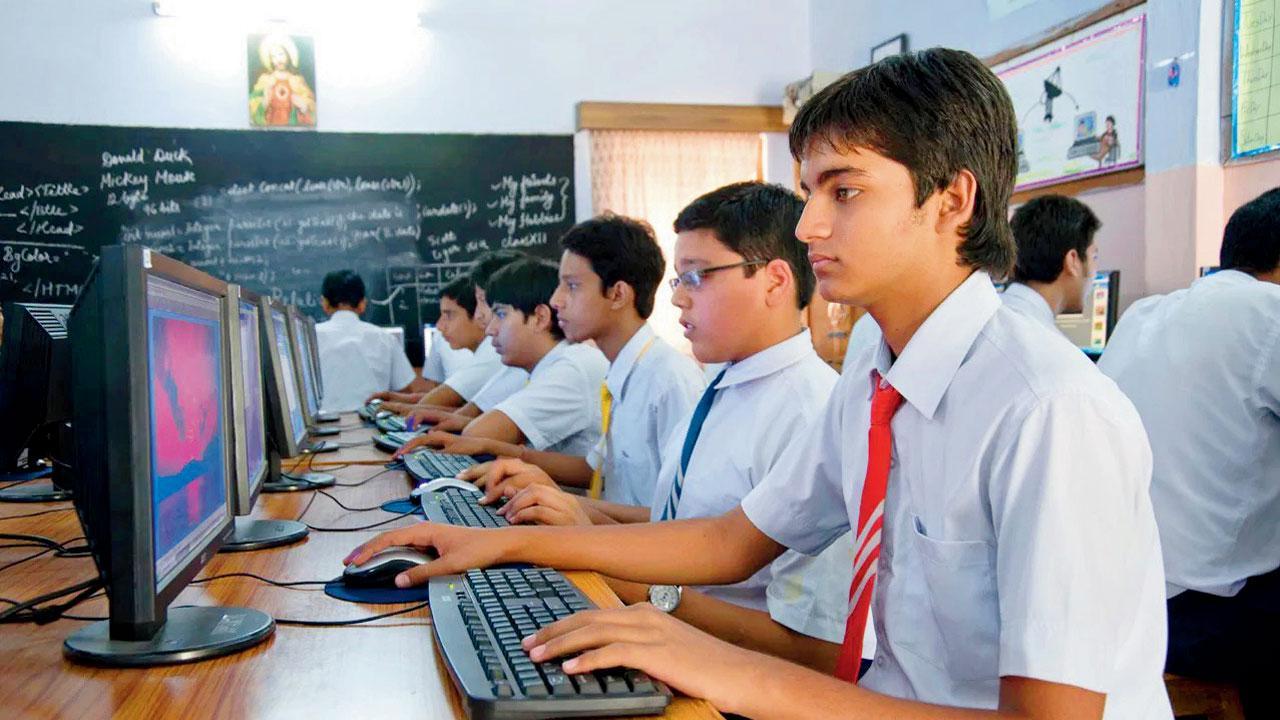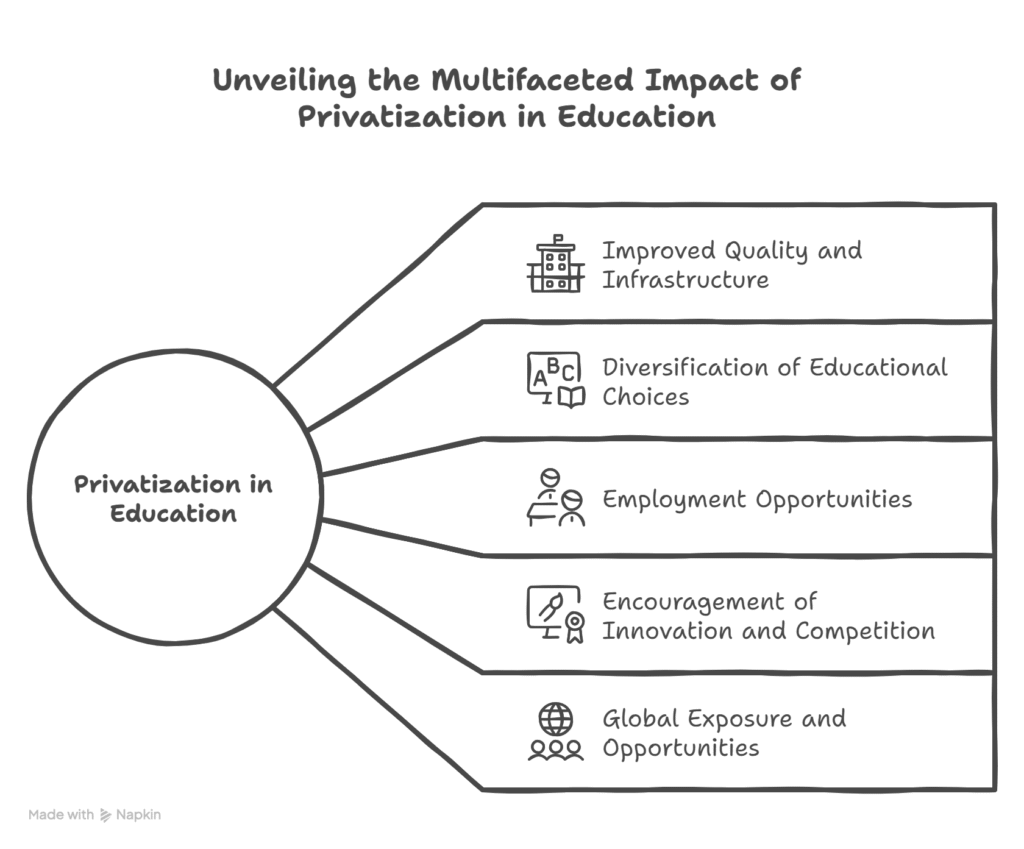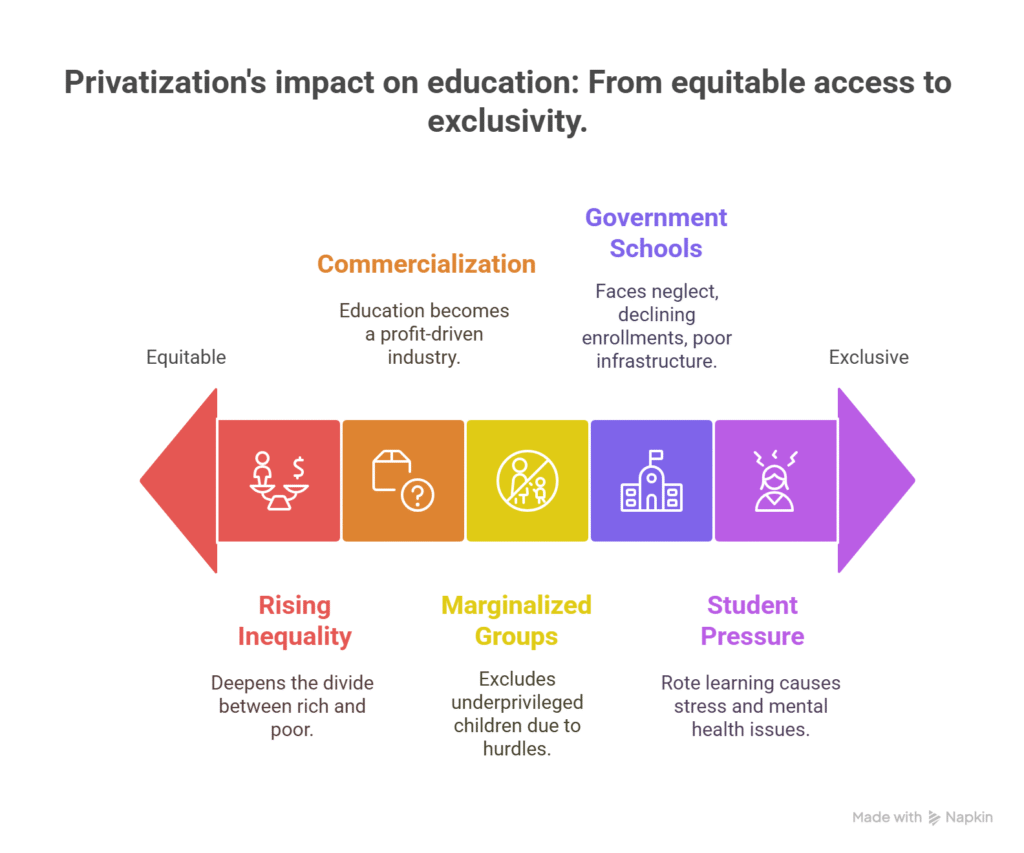Introduction on Privatization of Education in India
Education is a fundamental pillar of societal development, shaping individuals’ futures and contributing to national progress. In India, the education system has undergone significant transformations, with privatization playing a crucial role in recent decades. Privatization refers to the increasing involvement of private entities in the provision of education, which was traditionally dominated by government-run institutions. While privatization has led to improved infrastructure, quality education, and global competitiveness, it has also raised concerns about accessibility, affordability, and social inequality.
From a sociological perspective, the privatization of education in India presents both opportunities and challenges. It influences social stratification, reinforces economic disparities, and alters the dynamics of educational access. This article critically examines privatization in Indian education, analyzing its impact on different social groups and evaluating whether it is a boon or a bane for society.

Table of Contents
Historical Context of Privatization of Education in Indian Education
Post-independence, India’s education system was largely governed by the state, with an emphasis on universal access and equity. The Kothari Commission (1964-66) recommended a common school system to reduce disparities, but over time, economic liberalization in the 1990s led to the growth of private educational institutions.
The New Economic Policy (1991) encouraged private investment in various sectors, including education, leading to the rise of elite private schools, international universities, and coaching centers. The Right to Education Act (2009) attempted to regulate private schools by mandating 25% reservation for economically weaker sections (EWS), but implementation remains inconsistent.
Privatization as a Boon: Positive Sociological Impacts
1. Improved Quality and Infrastructure
Private institutions often provide better facilities, well-trained teachers, and advanced curricula compared to many government schools. This has raised education standards, enabling students to compete globally.
2. Diversification of Educational Choices
Privatization has introduced varied educational models (IB, CBSE, ICSE, international schools), catering to different socio-economic groups. Parents can choose institutions based on their aspirations and financial capacity.
3. Employment Opportunities
The growth of private schools, colleges, and coaching centers has generated employment for teachers, administrators, and support staff, contributing to economic development.
4. Encouragement of Innovation and Competition
Private institutions often adopt innovative teaching methods, technology integration, and skill-based learning, pushing government schools to improve their standards.
5. Global Exposure and Opportunities
Many private schools and universities collaborate with international institutions, offering students exposure to global education trends and improving employability.
Privatization as a Bane: Negative Sociological Impacts

1. Rising Inequality and Social Stratification
Privatization has deepened the divide between the rich and poor. Elite private schools cater to affluent families, while underfunded government schools serve marginalized communities. This perpetuates social stratification, as quality education becomes a privilege rather than a right.
2. Commercialization of Education
Education has turned into a profit-driven industry, with exorbitant fees, hidden charges, and aggressive marketing. This commercialization excludes low-income families, reinforcing economic disparities.
3. Exclusion of Marginalized Groups
Despite RTE’s 25% EWS quota, many private schools resist admissions for underprivileged children due to bureaucratic hurdles and social stigma. Dalits, tribal communities, and rural populations remain disproportionately excluded from quality private education.
4. Decline of Government Schools
As privatization grows, government schools face neglect, with declining enrollments and poor infrastructure. This creates a vicious cycle where only those who cannot afford private education attend public schools, further marginalizing the poor.
5. Pressure and Mental Health Issues
Private institutions often emphasize rote learning and excessive competition, leading to stress, anxiety, and mental health problems among students. The coaching industry, particularly for competitive exams, exacerbates this issue.
Sociological Theories and Privatization of Education
1. Functionalist Perspective
Functionalists argue that education serves to transmit knowledge, skills, and societal values. Privatization, in this view, enhances efficiency and meritocracy by rewarding talent and hard work. However, critics argue that it benefits only those with economic capital, neglecting broader social cohesion.
2. Conflict Perspective
Marxist sociologists view privatization as a tool for the bourgeoisie to maintain dominance. Elite private schools reproduce class inequalities by providing better opportunities to the rich while denying the same to the working class. Pierre Bourdieu’s concept of cultural capital explains how privileged families use private education to secure social mobility for their children, leaving others behind.
3. Symbolic Interactionism
This perspective examines how privatization affects student-teacher interactions and self-perception. Private school students often develop a sense of superiority, while government school students may internalize inferiority, affecting their confidence and aspirations.

Case Studies and Real-World Implications
1. Kota’s Coaching Industry
Kota, Rajasthan, is a hub for private coaching centers preparing students for engineering and medical entrance exams. While it produces top rankers, it also highlights the dark side of privatization—student suicides, extreme pressure, and financial burdens on middle-class families.
2. Elite Private Universities
Institutions like Ashoka University and OP Jindal Global University offer world-class education but at high costs, making them inaccessible to most Indians. This creates an elitist education system where only the affluent can access premium learning.
3. Low-Fee Private Schools
Budget private schools have emerged as an alternative for lower-middle-class families dissatisfied with government schools. However, their quality varies, and many operate without proper regulations, exploiting parents’ aspirations.
Government Policies and Possible Solutions
To mitigate the negative effects of privatization, the government must:
- Strengthen Public Education – Increase funding for government schools, improve teacher training, and upgrade infrastructure to make them competitive.
- Regulate Private Institutions – Enforce fee regulations, ensure transparency in admissions, and strictly implement the RTE quota for EWS students.
- Promote Inclusive Education – Encourage public-private partnerships (PPPs) that benefit marginalized communities without commercializing education.
- Focus on Skill-Based Learning – Shift from rote learning to practical, employment-oriented education to reduce reliance on coaching centers.
- Mental Health Support – Introduce counseling services in schools to address stress and anxiety caused by academic pressure.
Conclusion on Privatization of Education in India
The privatization of education in India is a double-edged sword. While it has enhanced quality, innovation, and global competitiveness, it has also exacerbated social inequalities, commercialized learning, and marginalized underprivileged groups. From a sociological standpoint, privatization reinforces existing class hierarchies, making education a tool for social reproduction rather than equal opportunity.
For privatization to be a true boon, it must be regulated and balanced with strong public education policies that ensure equity. Only then can India achieve an inclusive and just education system that serves all sections of society, not just the privileged few.
Topic Related Questions on Privatization of Education in India
5-Mark Questions on Privatization of Education in India (Short Answer Type)
- Define privatization of education and mention two advantages of private schools in India.
- How does privatization of education contribute to social inequality?
- What is the role of the Right to Education (RTE) Act in regulating private schools?
- Explain how commercialization affects the education sector in India.
- Give two reasons why parents prefer private schools over government schools.
10-Mark Questions on Privatization of Education in India (Brief Essay Type)
- Discuss the impact of privatization on the quality of education in India, highlighting both positive and negative aspects.
- Examine the role of private coaching centers in India’s education system. Are they beneficial or harmful?
- How does privatization reinforce social stratification in Indian society? Explain with examples.
- Critically analyze the effectiveness of the 25% EWS quota in private schools under the RTE Act.
- Compare the infrastructure and teaching standards of private and government schools in India.
15-Mark Questions on Privatization of Education in India (Long Essay Type)
- “Privatization of education in India has led to exclusion rather than inclusion.” Critically evaluate this statement from a sociological perspective.
- Discuss the consequences of privatization on marginalized communities in India. How can the government ensure equitable access to quality education?
- Analyze the role of privatization in the Indian education system using functionalist and conflict perspectives in sociology.
- Examine the psychological and social impacts of excessive competition in privatized education, with reference to coaching hubs like Kota.
- “Education is becoming a commodity rather than a fundamental right in India due to privatization.” Do you agree? Justify your answer with relevant examples.

1 thought on “Privatization of Education in India: A Boon or a Bane?”